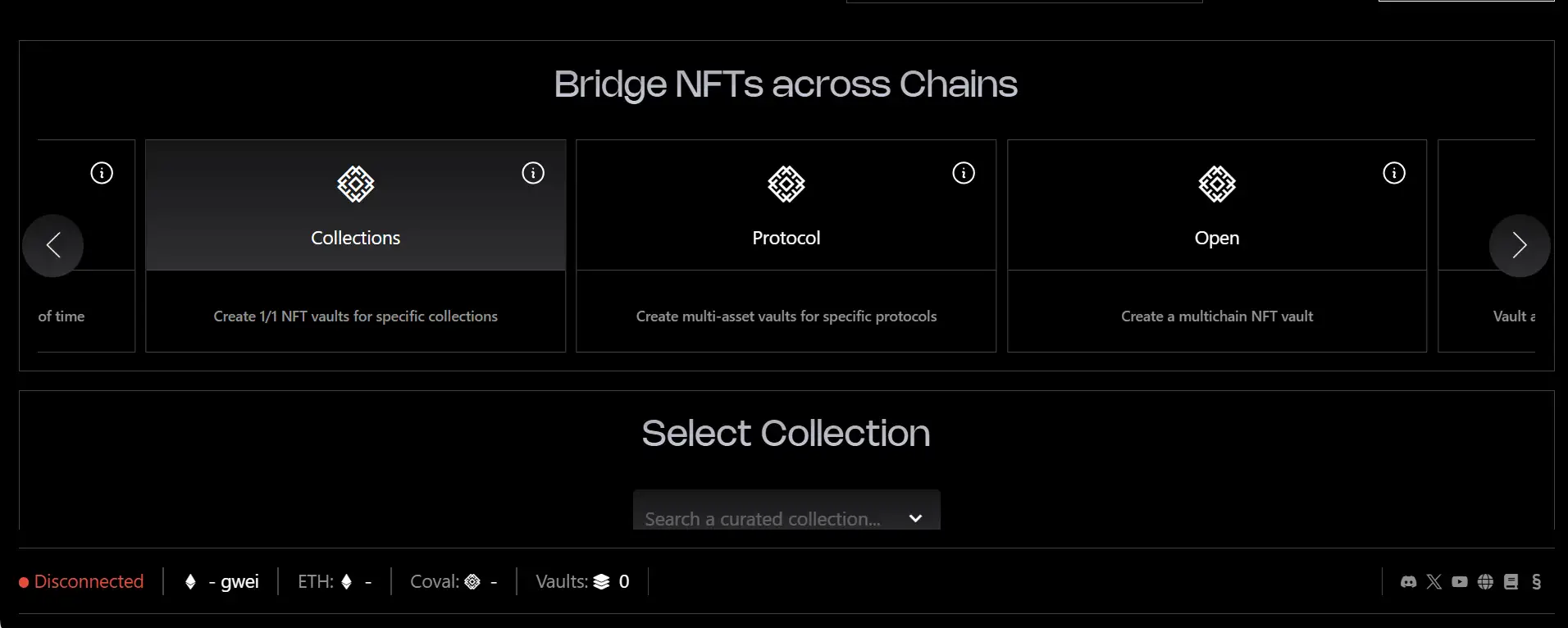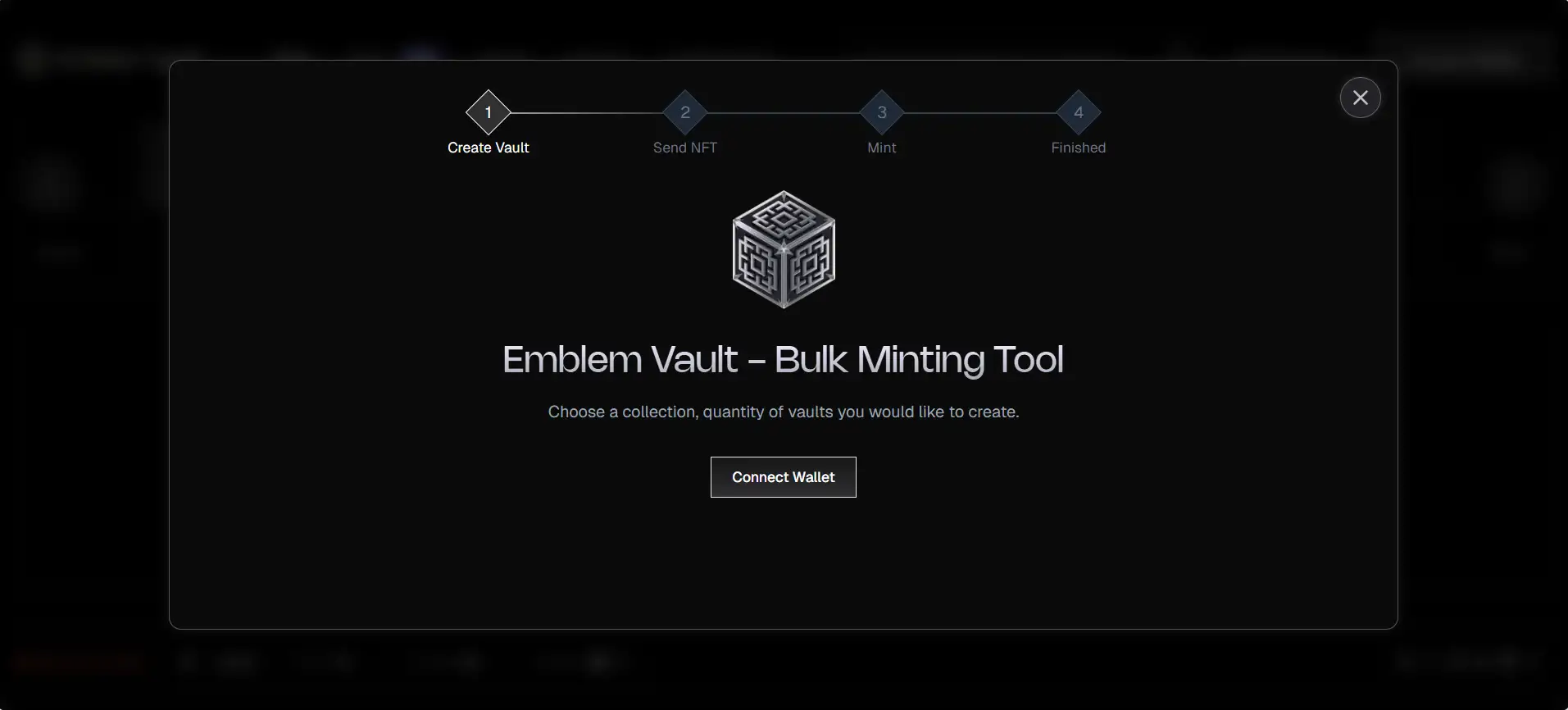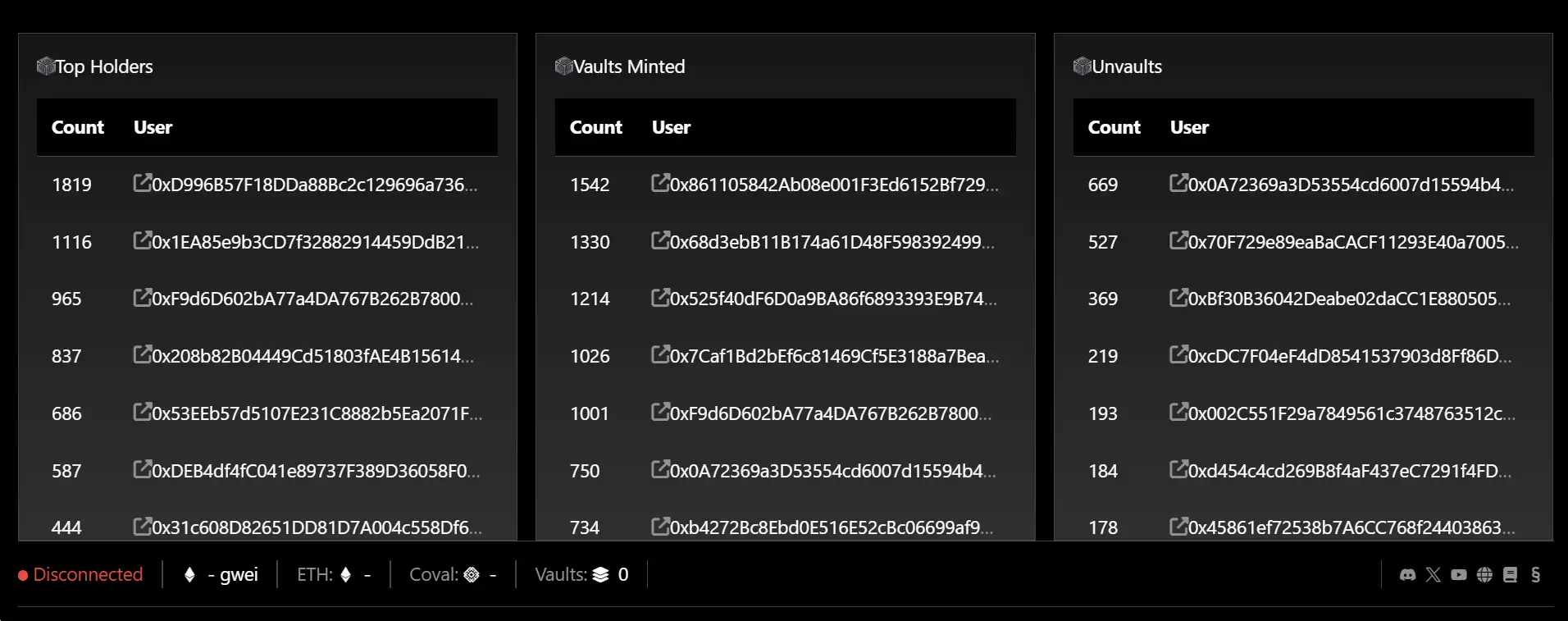About Emblem Vault
Emblem Vault is the leading cross-chain NFT protocol that allows users to encapsulate and transfer digital assets—both NFTs and cryptocurrencies—across multiple blockchains. Since its mainnet launch in September 2020, Emblem Vault has processed over 60,000 ETH in trading volume and supports 12 different blockchain protocols, including Ethereum, Binance Smart Chain, and Polygon. With more than 17,000 unique on-chain holders, it has become the go-to solution for multichain asset management.
The platform’s core offering is its “vault” mechanism, enabling users to mint a multi-asset NFT that can contain cryptocurrencies, NFTs, tokens, and timelocked assets—all within a single transferable token. Designed to eliminate the need for traditional bridging solutions, Emblem Vault empowers creators, collectors, and developers to manage diverse digital portfolios with full autonomy and unmatched interoperability. Whether you’re securing collectibles or building complex DeFi applications, Emblem Vault offers the infrastructure needed for the future of digital asset mobility.
Emblem Vault represents a groundbreaking evolution in the way digital assets are managed and exchanged across blockchain networks. By encapsulating assets from multiple chains into a single transferable vault, the platform has revolutionized how users interact with NFTs, cryptocurrencies, and tokenized content. Using familiar token standards like ERC-721, ERC-721A, and ERC-1155, each vault functions like a portable multi-asset wallet that works seamlessly across Proof-of-Work and Proof-of-Stake chains.
The flexibility to hold and bridge fungible and non-fungible assets from multiple chains within a single vault makes Emblem Vault not just a wallet, but a cross-chain transaction engine. Users can mint and trade vaults on marketplaces, create vaults with specific collections, and lock assets via time-based conditions. This holistic design removes the friction, risks, and technical hurdles of conventional bridges, introducing a more fluid and secure asset exchange model. Vaults can be used in DeFi, sold as NFTs, or serve as containers for off-chain content and private keys, all governed by on-chain logic.
The project traces its roots to 2014 and the early vision of Shannon Code, who conceived of Emblem Vault as a method for bundling entire portfolios into single tradable tokens. Initially evolving from the Ribbit Rewards system (RBR), it matured through the COVAL token ecosystem into the full-fledged protocol we see today. As of now, Emblem Vault has been adopted widely across the NFT and DeFi landscapes, acting as a secure, interoperable alternative to wrapped assets and conventional bridging tools.
Similar tools and platforms in the multichain ecosystem include LayerZero, Wormhole, and Synapse Protocol. However, Emblem Vault distinguishes itself by allowing you to encapsulate multiple token types into one verifiable, tradeable object, fundamentally changing how ownership and asset movement are structured on-chain.
Emblem Vault provides numerous benefits and features that make it a cornerstone of the multichain NFT and digital asset infrastructure:
- Cross-Chain Asset Encapsulation: Store NFTs, cryptocurrencies, tokens, and more from different blockchains inside one vault.
- Zero Dependency on Bridges: Avoid complex bridging protocols and gas inefficiencies with native vault-based transfers.
- ERC Standard Compatibility: Vaults adhere to widely supported standards like ERC-721, 721A, and 1155 for maximum interoperability.
- Integrated Timelocks: Lock vaults or individual assets until a specific timestamp for vesting, gifting, or delayed access.
- Marketplace-Friendly: Trade vaults seamlessly across platforms and marketplaces such as OpenSea and LooksRare.
- DeFi & DApp Ready: Use vaults in smart contracts, collateral systems, and other decentralized finance protocols.
- Creator and Collection Tools: Launch custom NFT drops or branded collections using vault encapsulation and protocol APIs.
Emblem Vault offers an easy, intuitive way to start building and managing your multichain asset vaults.
- Visit the Platform: Head over to emblem.vision and connect your Web3 wallet to begin.
- Create Your Vault: Choose a vault type—NFT, fungible, timelocked, or protocol-specific—and input your assets to encapsulate.
- Customize & Mint: Add metadata, set access rules, define time locks, or link to curated collections. Then mint the vault as an ERC-721/721A/1155 token.
- Bridge Assets Cross-Chain: Use the platform’s embedded tools to migrate assets across chains securely and permissionlessly.
- List or Share: Publish your vault on marketplaces or use it within DeFi protocols. Vaults can also be airdropped or used as digital time capsules.
- Track Activity: Monitor vault transfers, leaderboard rankings, and trading activity right from your dashboard or public explorer.
Emblem Vault FAQ
Emblem Vault encapsulates digital assets—whether cryptocurrencies or NFTs—from multiple blockchains into a single ERC-721, ERC-721A, or ERC-1155 token. This vault token is portable across chains and marketplaces, effectively eliminating the need for risky, complex bridging protocols. Instead of transferring the asset itself, the vault acts as a container with all assets intact inside, allowing you to interact across chains without interacting with native bridge layers. You can explore vault functionality at emblem.vision.
Yes, Emblem Vault supports mixed-asset vaults, allowing users to bundle cryptocurrencies, NFTs, ERC-20 tokens, and more into one portable vault. This means you can create a vault that includes Ethereum, BNB, NFTs from various blockchains, and even time-locked tokens all together. It’s a flexible way to manage or transfer an entire asset portfolio in one go. Learn how at emblem.vision.
Timelocking a vault allows you to lock access to the contents of a vault for a specified period. The assets inside remain secure and visible on-chain, but cannot be accessed or transferred until the lock expires. This is managed through on-chain timestamp conditions embedded in the vault’s metadata. Once the time condition is met, the vault becomes fully accessible. This feature is ideal for vesting, inheritance, or digital gifting. Set up your own timelock at emblem.vision.
Security is central to the Emblem Vault architecture. Assets are encapsulated using Ethereum token standards and stored immutably within the vault structure. Only the vault owner—identified through wallet authentication—has the authority to unlock or transfer the contents. The system leverages on-chain verification, non-custodial ownership, and smart contract logic to prevent unauthorized access or manipulation. To maintain full control of your vault, visit emblem.vision.
Unlike protocols like LayerZero or Wormhole, which rely on relay-based bridging mechanisms, Emblem Vault focuses on asset encapsulation. This means your NFTs or tokens aren’t being transferred across chains—they’re stored inside a portable vault token that itself can be moved, sold, or bridged. This approach avoids bridge-based risks like smart contract exploits, providing a simpler, more secure form of multi-chain interoperability. Explore this innovation at emblem.vision.
You Might Also Like












